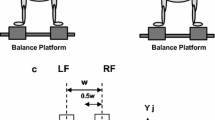Abstract.
During sustained constant velocity and low-frequency off-vertical axis rotations (OVAR), otolith signals contribute significantly to slow-phase eye velocity. The adaptive plasticity of these responses was investigated here after semicircular canal plugging. Inactivation of semicircular canals results in a highly compromised and deficient vestibulo-ocular reflex (VOR). Based on the VOR enhancement hypothesis, one could expect an adaptive increase of otolith-borne angular velocity signals due to combined otolith/canal inputs after inactivation of the semicircular canals. Contrary to expectations, however, the steady-state slow-phase velocity during constant velocity OVAR decreased in amplitude over time. A similar progressive decrease in VOR gain was also observed during low-frequency off-vertical axis oscillations. This response deterioration was present in animals with either lateral or vertical semicircular canals inactivated and was limited to the plane(s) of the plugged canals. The results are consistent with the idea that the low-frequency otolith signals do not simply enhance VOR responses. Rather, the nervous system appears to correlate vestibular sensory information from the otoliths and the semicircular canals to generate an integral response to head motion.
Similar content being viewed by others
Author information
Authors and Affiliations
Additional information
Electronic Publication
Rights and permissions
About this article
Cite this article
Angelaki, D., Merfeld, D. & Hess, B. Low-frequency otolith and semicircular canal interactions after canal inactivation. Exp Brain Res 132, 539–549 (2000). https://doi.org/10.1007/s002210000364
Received:
Accepted:
Issue Date:
DOI: https://doi.org/10.1007/s002210000364




